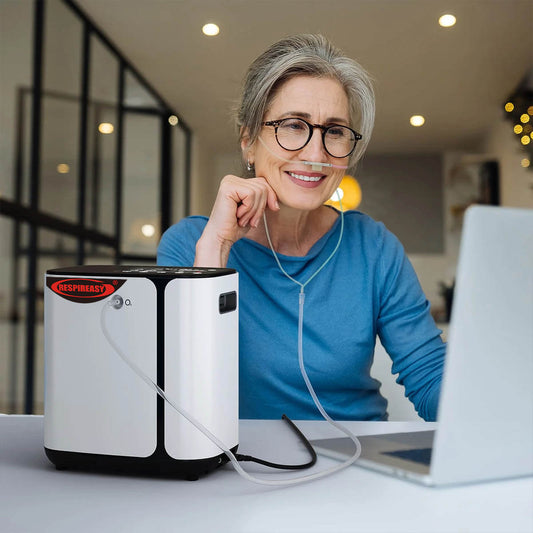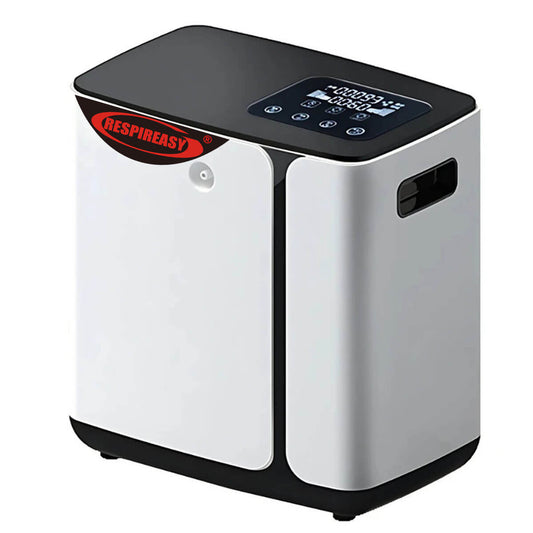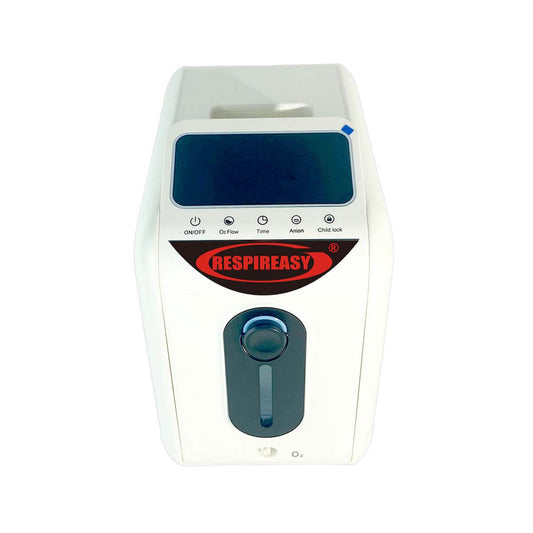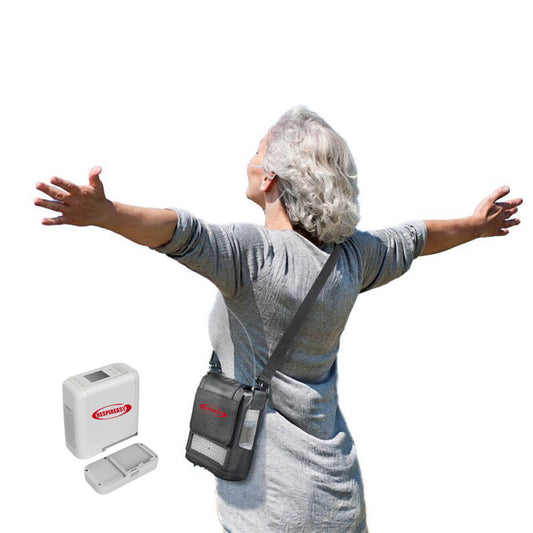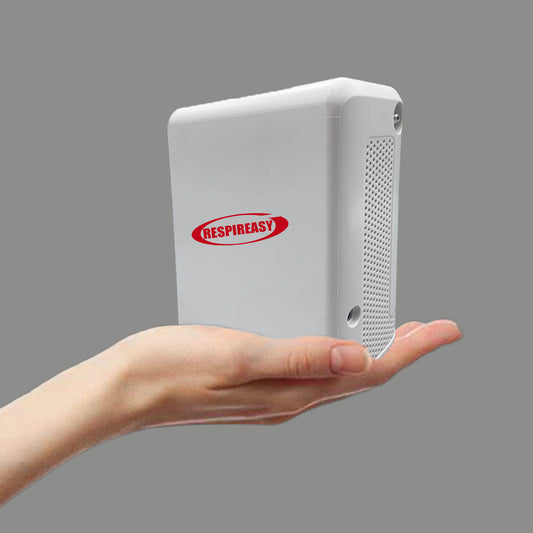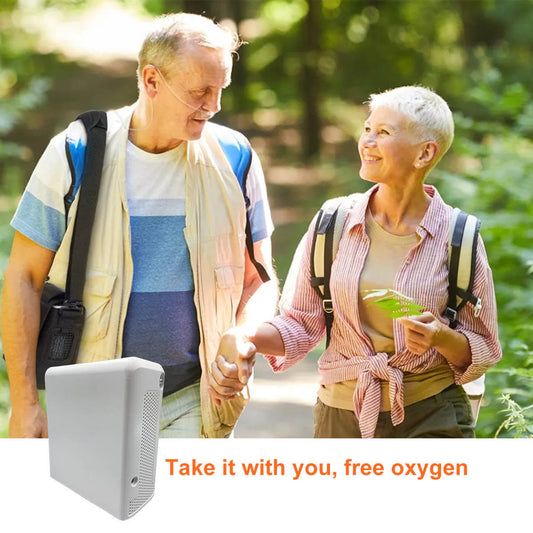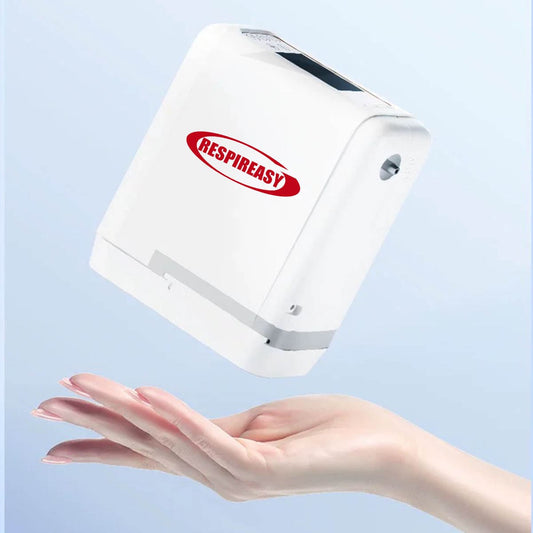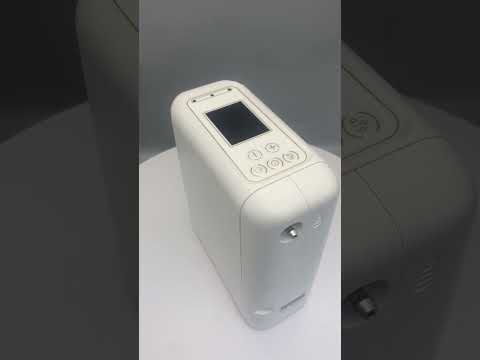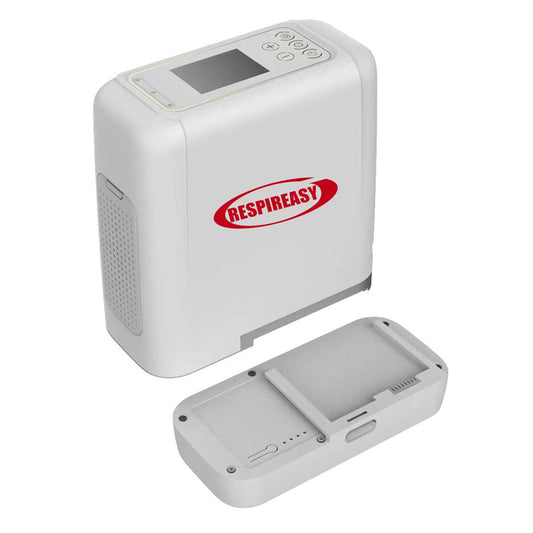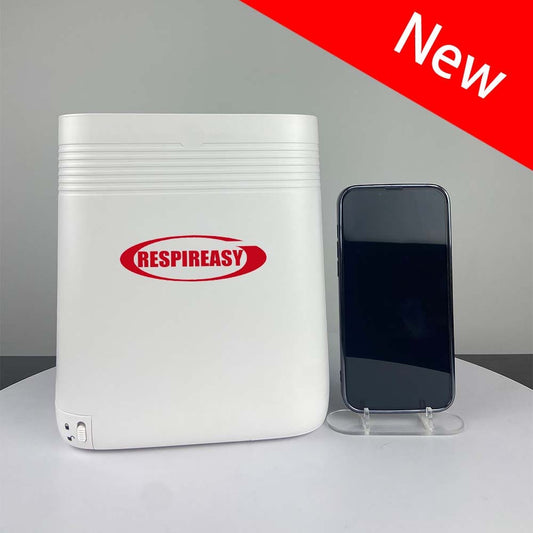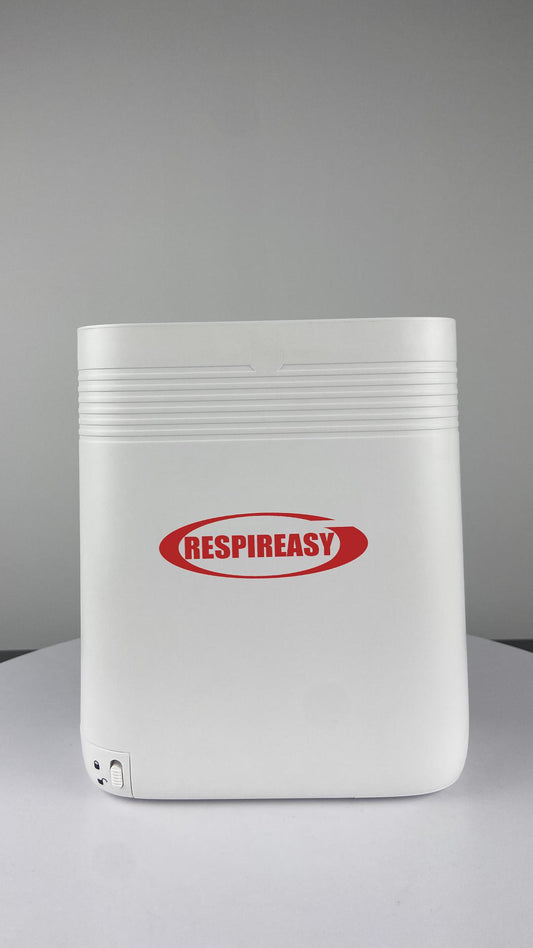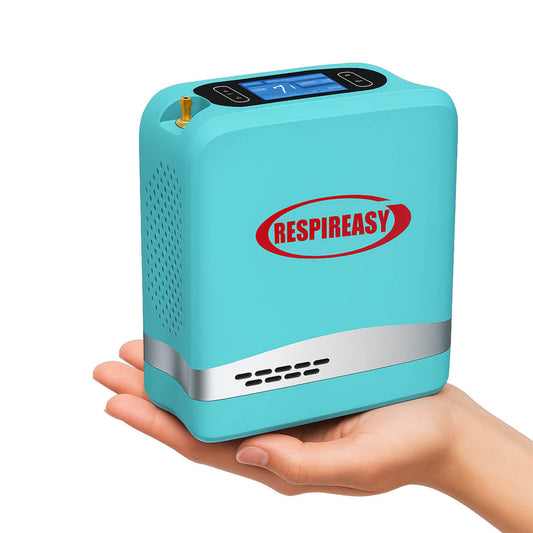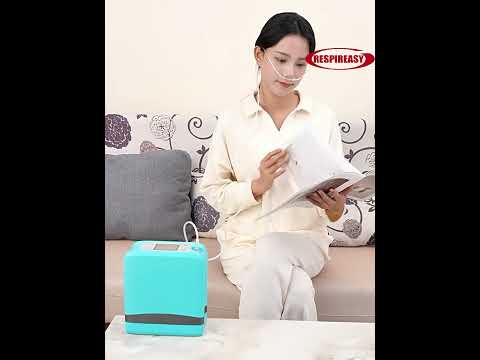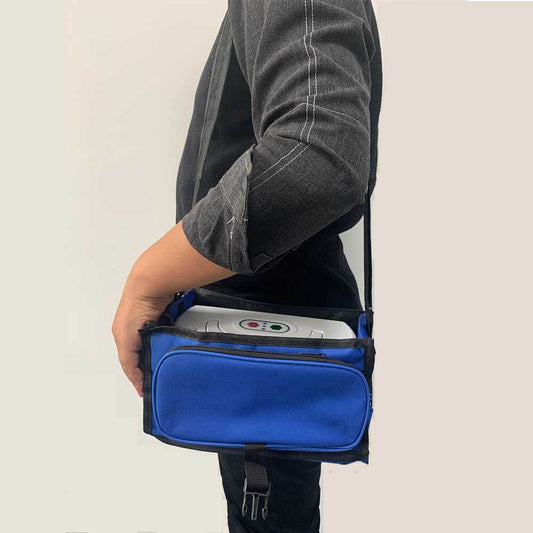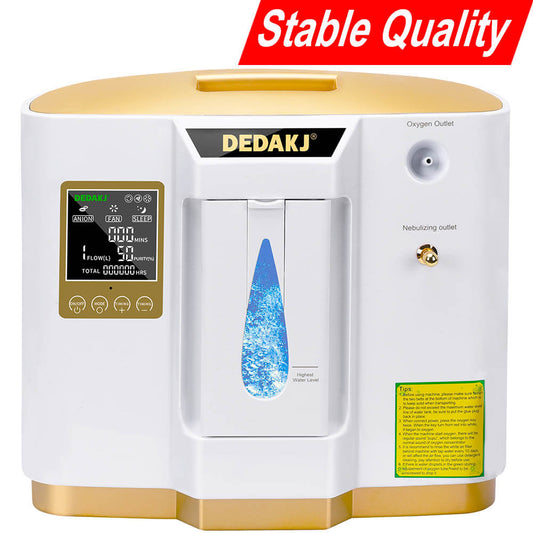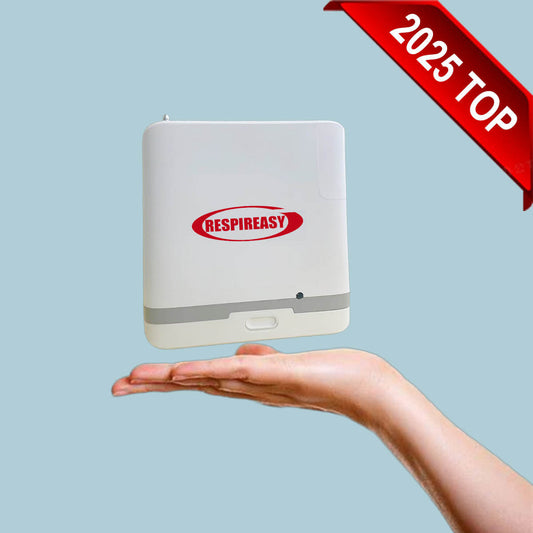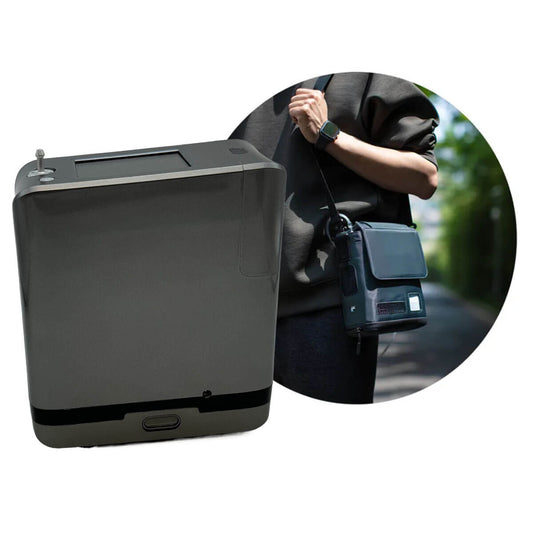Instruction User Manual of Small Portable Oxygen Concentrator 5L Battery Powered Oxygen Generator
Small Portable Oxygen Concentrator

Instruction Manual of Small Portable Oxygen Concentrator

Contents
Chapter 1: Glossary of Symbols
Chapter 2: Contraindications, Warnings and Cautions
- Contraindications
- Warnings
- Cautions
Chapter 3: Indications for Use
Chapter 4: User Interfaces, Controls
- User Interfaces
- User Controls
Chapter 5: Operating Instructions
Chapter 6: Troubleshooting
Chapter 7: Cleaning, Care and Maintenance
- Cleaning and Care
- Filter Cleaning and Replacement
- Sieve bed columns Replacement
- Service
- Storage
- Disposal of Equipment and Accessories
Chapter 8: Specification
- Classification
- Alarm
1. Glossary of Symbols
The following table is a list of symbols and definitions that used with the JAY-1000P Oxyegn Concenttrator.
2. Contraindications, Warnings and Cautions
Contraindications
- This equipment is to be used as an oxygen supplement and is NOT INTENDED to be life supporting or life sustaining.
Warnings
- The device produces concentrated oxygen gas which accelerates combustion. DO NOT USE THE DEVICE WHEN SMOKING OR NEAR OPEN FLAME,MATCHES, PETROLEUM, OIL, GREASE, SOLVENTS, RADIANT HEATERS,AEROSOLS etc. Use only water based lotions or salves that are concentrated oxygen compatible during oxygen therapy.
- Concentrated oxygen makes it easier for a fire to start and spread. Do not leave the nasal cannula on upholstery or other fabric such as bedding or personal clothing if the oxygen concentrator is turned on but not in use.Concentrated oxygen will make the materials flammable. Turn off the oxygen concentrator when not use.
- Do not use the oxygen concentrator in the presence of pollutants, smoke or fumes, flammable anesthetics, cleaning agents or other chemical vapors.This may internally contaminate the oxygen concentrator and degrade its performance.
- Do not use the oxygen concentrator if either the plug or the power cord is damaged to prevent accidental electrical shock.
- Do not submerge the oxygen concentrator in liquids, expose to liquids, or otherwise allow liquids to enter into the case,this may lead to electrical shock and/or damage. If the oxygen concentrator is exposed to liquids turn it off and unplug from electrical outlet before attempting to clean and dry the liquid spill.
- Do not use cleaning agents other than those specified in this manual.Always unplug the oxygen concentrator before performing any cleaning.Do not use alcohol, isopropyl alcohol, ethylene chloride, or petroleum based cleaners. This may impair the proper function and/or increase the risk of fire and burns.
- Do not disassemble the oxygen concentrator or attempt any maintenance other than tasks described in this user manual; disassembly creates a hazard of electrical shock and will void the warranty. Servicing of the concentrator is to be performed by qualified and trained personnel only.
- Do not use any columns other than those specified in this user manual. The use of non-specified columns may create a safety hazard and/or impair equipment ,performance and will void the warranty.
- To avoid danger of choking and strangulation hazard, keep tubing away from children and pets.
- If you begin to feel ill or are experiencing discomfort while using the oxygen concentrator, consult your health care provider immediately
Cautions
- This device to sell or rental by or on the order of a physician; may also be applicable in other countries. Under certain circumstances,the use of non- prescribed oxygen therapy can be hazardous.
- Additional monitoring or attention may be required for patients using this device who are unable to hear or see alarms or communicate discomfort. If the patient shows any signs of discomfort, a physician should be consulted immediately.
- Accessories not specified for use with the oxygen concentrator may impair performance. Always use accessories according to manufacturer’s instructions.
- Nasal cannula should be rated 5 liters per minute to ensure proper patient usage and oxygen delivery.
- Replace the nasal cannula on a regular basis. Check with your equipment provider or health care professional to determine how often the cannula should be replaced.
- It is recommended the oxygen concentrator accessory tubing and cannula include a means to reduce the propagation of fire.
- Do not operate the concentrator without the intake filter in place. Particles drawn into the oxygen concentrator may damage the equipment.
- Refer to the environmental range specifications for proper storage and use conditions. Temperatures in excess of the indicated range may cause device malfunction.
- Do not obstruct air intake or exhaust when operating the oxygen concentrator. Blockage of air circulation or proximity to a heat source may lead to internal heat buildup and shutdown or damage. Always maintain a minimum of six inches of clearance.
- Do not place anything in the power supply port other than the supplied wall cord. Avoid the use of electrical extension cords with the concentrator. Do not connect any other device to the same extension cord.
- Do not sit or stand on the concentrator, doing so can be hazardous.
- When the adapter is connected/unplugged or the battery is connected/unplugged, the device will beep "di" , and the main interface of the device will also display relevant information to display the current power supply.
- When an abnormal state occurs,there will be audible&visuable alarm , the device will display abnormal information.
In order to ensure a safe installation and operation of the Oxygen Concentrator, read and understand this entire manual before using the device.
The Oxygen Concentrator has a 5 year expected life except 1 year expected life for user serviceable sieve bed columns and rechargeable battery
3.Indications for Use
The Small Oxygen Concentrator is used on a prescriptive basis by patients requiring supplemental oxygen. It supplies a high concentrationof oxygen and is used with a nasal cannula to channel oxygen from the concentrator to the patient. The Oxygen Concentrator may be used in a home or institution.
4.User Interfaces, Controls
① ON/OFF button
② Flow setting display
③ Flow setting control button
④ Oxygen outlet
⑤ Particle filter
⑥ Type C charging port
⑦ Lithium battery

(1) User Interfaces
(Battery Level/ Oxygen Concentration /Flow Rate/ Alarm Number and Content /Present Woring Time (hour: minute) /Percentage of Power /Battery Charging /Setting Number /Accumulated Working Time (hour))

(2) User Controls
ON / OFF Button
Press once to turn “ON”;
Press and hold for three seconds to turn “OFF”.
Flow Setting Control Buttons
Use the – or + flow setting control buttons to select the setting
as shown on the display. There are five settings,from 1 to 5.
5.Operating Instructions
(1) Place the concentrator in a well-ventilated location; air intake and exhaust must have clear access. Ensure that the concentrator is at least 6 inches (15 cm.) away from walls, furniture and curtains that could impede adequate airflow to the device.
(2) Ensure particle filter is in place.
(3) Ensure intake filter is in place.
(4) Follow instructions as below:
Connecting your nasal cannula tubing to the nozzle fitting. Nozzle fitting is located on the top of the concentrator. See Figure 1.
(5) Turn on the concentrator by pressing the ON/OFF button .
See Figure 1.
(6) Use the or buttons to adjust the device to the prescribed setting. There are five flow settings, from 1 to 5. The current setting can be viewed on the display. You may begin breathing from the device; the required oxygen concentration is normally reached within 2 minutes after device is powered on.
(7) Ensure that the tubing is not kinked or pinched in any way and that oxygen is flowing through the nasal cannula. Refer to the troubleshooting section of this manual.
(8) Adjust the nasal cannula ,so that it is properly aligned on your face or as directed by your equipment provider.
(9) Turn off concentrator by pressing the ON/OFF button.Turn off the concentrator when not use

6.Troubleshooting
Contact your equipment provider if you need assistance with the device.
|
Problem |
Possible reason |
Recommended Solution |
|
Concentrator does not power on, when On/Off button is pressed |
Battery not installed properly |
Disassemble battery and reinstall |
|
Low battery |
Connect power plug ,charge the battery |
|
|
Power cord is not connected properly |
Check power cord for proper connection |
|
|
Malfunction |
Contact your equipment provider |
|
|
No oxygen |
Concentrator is not power on |
Press On/Off button to power concentrator |
|
Cannula is not connected properl your is kinkedor obstructed |
Check cannula and its connection |
|
|
High temperature |
Operating temperature is too high |
1. Check location of the device,make sure it is located on well ventilated place. |
|
|
|
2. Make sure no block on the outlet |
|
|
|
3. Contact your equipment provider |
|
Low oxygen |
Molecular sieve failure |
Contact your equipment provider to replace molecular sieve beds |
7.Cleaning, Care and Maintenance
Cleaning and Care
Periodically you may clean the outside case using a cloth dampened with a mild liquid detergent and water.
Follow manufacturer’s instructions on cleaning and care of concentrator accessories; clean or replace these accessories according to your healthcare provider or respective manufacturer’s instructions for use.
Filter cleaning and replacement
- Turn off the device, clean the particle filter
- Turn off the device ,disconnect the power supply andremove the
- Take out the intake filter and replace it with a newone
- Take out the intake filter . Note that the intake filter after long- time use may absorb and accumulate a lot of dust, please take precautions to avoid dust inhalation while
- Load the new filter in the correct direction.
- Reinstall the cover and insert the battery.


1.Remove the battery and open the cover
2.Remove the cover and take out the intake filter
3.Replacenew intake filter
4.Reinstall the cover and insert the battery.
Please clean and replace the filter in time, the replacement cycle depends on the use environment .
Sieve bed columns replacement
- Whenthe device indicates low oxygen concentration ,the sieve bed columns needs to be replaced, please contact the device provider in
- Long-term storage may shorten the lifespan of sieve bed.
- Long termoperation in a humid environment may shorten the lifespan of the sieve bed .
- Whenthe sieve bed is approaching the expiration date, it may cause high internal pressure,big noise, and low oxygen, which affects the performance and normal use of the Please pay attention to the relevant alarm information such as pressure and concentration .


- Removethe battery and lift the handle of the molecular sieve
- Pull the buckle in the direction of the red arrow and pull the handle of the screen drum upward at the same time
- Take out the molecular sieve and replace new one
- Fasten the buckle and handle, and insert the battery
Service
The concentrator is specifically designed to minimize routine preventative maintenance.For assistance, if needed, in setting up,using, maintaining, or reporting unexpected operationor events,contact your equipment provider,or the manufacturer.
Storage
When not use, store indoors away from excessive moisture and temperatures. Storage conditions outside of range specified may result in damage and device malfunction.
Disposal of Equipment and Accessories
Follow your local governing ordinances for disposal and recycling of the concentrator and accessories.
8.Specification
|
Dimensions: |
183L x 86W x 199H mm |
|||||
|
Weight: |
1.98±0.3 kgs |
|||||
|
Oxygen Concentration: |
93±3% at all settings |
|||||
|
AC Power: |
100-240VAC, 50-60Hz |
|||||
|
Environmental Ranges for Use: |
Temperature:-10 to 40˚C Humidity: ≤80% Atmospheric pressure:86-106Kpa |
|||||
|
Environmental Ranges for Shipping & Storage: |
Temperature:-10 to 40˚C Humidity: ≤80% Atmospheric pressure:86-106Kpa |
|||||
|
Outlet pressure |
≤120Kpa |
|||||
|
Flow Control Settings: |
5 Settings: 1 to 5 settings |
|||||
|
Battery running time |
Setting 1≈5.5hours Setting 2 ≈2.96hours Setting 3 ≈2.5hours Setting 4 ≈1.73hours Setting 5 ≈1.5hours |
|||||
|
Breathing Frequency |
10 to 40 BPM |
|||||
|
Flow Control Settings and Pulse Volumes |
Settings |
|||||
|
|
1 |
2 |
3 |
4 |
5 |
|
|
Breathe rate |
Pulse volume(ml) |
|||||
|
15 |
14 |
28 |
42 |
56 |
66 |
|
|
20 |
10 |
21 |
31 |
42 |
50 |
|
|
25 |
8 |
16.8 |
25 |
33 |
40 |
|
|
30 |
7 |
14 |
21 |
28 |
33 |
|
|
35 |
6 |
12 |
18 |
24 |
28 |
|
|
40 |
5 |
10 |
16 |
21 |
25 |
|
|
±15% at STPD* +/-25% over the rated environmental range *STPD is 101.3 kPa at a noperating temperature of 20 °C |
||||||
Classifications
|
Mode of Operation: |
Continuous Duty |
|
Type of Protection Against Electrical Shock: |
Class II |
|
Degree of Protection to Concentrator Components Against Electrical Shock: |
Type BF Not intended for cardiac application |
|
Degrees of Protection Provided by Enclosure |
IP21 |
Alarm
- High TemperatureAlarm:The red light on the display will be flashing and the screen will show “1!!!” “High Temperature!!!” Number and content are displayed in turn, with a red background.
- Fan ErrorAlarm: The red light on the display will be flashing and the screen will show “1!!!” “High Temperature!!!” Number and content are displayed in turn, with a red background.
- Compressor FailureAlarm: The red light on the display will be flashing and the screen will show “3!!!” “Compressor Failure!!!” Number and content are displayed in turn, with a red background.
- Low Oxygen ConcentrationAlarm(≤85%): The Yellow light on the display will be flashing and the screen will show “4!!” “Low Oxygen Concentration!!” Number and content are displayed in turn, with a yellow background.
- Low PressureAlarm: The Yellow light on the display will be flashing and the screen will show “5!!” “Low Pressure!!” Number and content are displayed in turn, with a yellow background.
- Low BatteryAlarm: When the battery power is≤5%, and without external power, the yellow light on the display ill be flashing and the screen will show “6!!” “Low Battery!!” Number and content are displayed in turn, with a yellow background.
- No BreathingAlarm: This alarm occurs when a breath is not detected for 4 minutes after turning on.The yellow light on the display will be flashing and the screen will show “7!!” “No Breathing!!”. Number and content are displayed in turn, with a yellow background. During the operation, if a breath is not detected within 1 minute, this alarm will also be occurs.
- PreheatingAlarm: After starting the oxygen concentrator for 120 seconds, if the oxygen concentration does not reach 93±3%,the green light on the display will be flashing and screen will show“8!” Preheating! Number and content are displayed in turn, with a green background, disappear after 2s. And the device sends out an audio alarm signal. If the oxygen concentration reaches 93±3% within 120s after the oxygen concentrator turns on, the alarm will not be activated.
9, Guidance and Manufacturer’s Declaration-Electromagnetic Emissions:
The Concentrator is intended for use in the electromagnetic environment specified below. The user ofthe Concentratorshould make sure it is used in such an environment.
|
Guidelines and Manufacturer's Declaration - Electromagnetic Emissions |
||
|
JAY-1000P is intended for use in the electromagnetic environment specified below, and the purchaser or user should make sure it is used in the electromagnetic environment |
||
|
Launch Test |
Compliance |
Electromagnetic Environment - Guidance |
|
RF emission CISPR 11 |
Group 1 |
The JAY-1000P uses RF energy only for its internal functions. Therefore, its RF emissions are low and the potential for interference to nearby electronic equipment is low |
|
RF emission CISPR 11 |
Class B |
|
|
Harmonic emission IEC 61000-3-2 |
Class A |
JAY-1000P is suitable for use in all installations including domestic installations and direct connection to domestic residential public low voltage power supply network |
|
Voltage fluctuation/ flickering emission IEC 61000-3-3 |
compliance |
|
|
Guidelines and Manufacturer's Declaration - Electromagnetic Emissions |
||
|
JAY-1000P is intended for use in the electromagnetic environment specified below, and the purchaser or user should make sure it is used in the electromagnetic environment |
||
|
Launch Test |
Compliance |
Electromagnetic Environment - Guidance |
|
RF emission CISPR 11 |
Group 1 |
The JAY-1000P uses RF energy only for its internal functions. Therefore, its RF emissions are low and the potential for interference to nearby electronic equipment is low |
|
RF emission CISPR 11 |
Class B |
|
|
Harmonic emission IEC 61000-3-2 |
Class A |
JAY-1000P is suitable for use in all installations including domestic installations and direct connection to domestic residential public low voltage power supply network |
|
Voltage fluctuation/ flickering emission IEC 61000-3-3 |
compliance |
|
|
Guidelines and Manufacturer's Declaration - Electromagnetic Emissions |
||
|
JAY-1000P is intended for use in the electromagnetic environment specified below, and the purchaser or user should make sure it is used in the electromagnetic environment |
||
|
Launch Test |
Compliance |
Electromagnetic Environment - Guidance |
|
RF emission CISPR 11 |
Group 1 |
The JAY-1000P uses RF energy only for its internal functions. Therefore, its RF emissions are low and the potential for interference to nearby electronic equipment is low |
|
RF emission CISPR 11 |
Class B |
|
|
Harmonic emission IEC 61000-3-2 |
Class A |
JAY-1000P is suitable for use in all installations including domestic installations and direct connection to domestic residential public low voltage power supply network |
|
Voltage fluctuation/ flickering emission IEC 61000-3-3 |
compliance |
|
|
Guidelines and Manufacturer's Declaration - Electromagnetic Emissions |
||
|
JAY-1000P is intended for use in the electromagnetic environment specified below, and the purchaser or user should make sure it is used in the electromagnetic environment |
||
|
Launch Test |
Compliance |
Electromagnetic Environment - Guidance |
|
RF emission CISPR 11 |
Group 1 |
The JAY-1000P uses RF energy only for its internal functions. Therefore, its RF emissions are low and the potential for interference to nearby electronic equipment is low |
|
RF emission CISPR 11 |
Class B |
|
|
Harmonic emission IEC 61000-3-2 |
Class A |
JAY-1000P is suitable for use in all installations including domestic installations and direct connection to domestic residential public low voltage power supply network |
|
Voltage fluctuation/ flickering emission IEC 61000-3-3 |
compliance |
|
|
Guidelines and Manufacturer's Declaration - Electromagnetic Emissions |
||
|
JAY-1000P is intended for use in the electromagnetic environment specified below, and the purchaser or user should make sure it is used in the electromagnetic environment |
||
|
Launch Test |
Compliance |
Electromagnetic Environment - Guidance |
|
RF emission CISPR 11 |
Group 1 |
The JAY-1000P uses RF energy only for its internal functions. Therefore, its RF emissions are low and the potential for interference to nearby electronic equipment is low |
|
RF emission CISPR 11 |
Class B |
|
|
Harmonic emission IEC 61000-3-2 |
Class A |
JAY-1000P is suitable for use in all installations including domestic installations and direct connection to domestic residential public low voltage power supply network |
|
Voltage fluctuation/ flickering emission IEC 61000-3-3 |
compliance |
|
DEDAKJ Oxygen Concentrator
Official Site:
https://dedakjoxygenconcentrators.com/






























